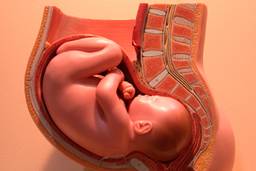Distortion 101
In spite of the facts, Bush’s Department of Health and Human Services keeps pushing abstinence
Steve Yoder

Just as children take cues from their parents, community programs look to the examples set by their funders. At the U.S. Department of Health and Human Services (HHS), a key lesson being taught is that manipulation and distortion of science is fine as long as it promotes chastity.
The creators of the abstinence-only programs that HHS funds have learned the lesson well. In December, Rep. Henry Waxman (D-Calif.) released a House committee analysis showing that 11 of the 13 abstinence-only curricula that the committee reviewed contained “false, misleading, or distorted information about reproductive health.” For example, some of the curricula teach that mental health problems are a consequence of sexual activity and that touching another person’s genitals can result in pregnancy. Another incorrectly claims that it is unknown whether using condoms prevents HIV.
Those distortions mirror HHS’ own approach to studying whether taxpayer-funded efforts to promote virginity until marriage actually achieve anything. In 1998, the agency funded a large, rigorous study of abstinence-only programs. The study’s first report, published in February 2002, provided information on the programs’ delivery of promised services and reached a positive verdict. That first report stated that a second report in spring 2003 would provide the initial information about what really matters: the programs’ effectiveness in changing teen behavior.
That second report is almost two years overdue, and the HHS press office will not comment on its status. An agency official closely involved in the study, who spoke on the condition of anonymity, confirmed that the report was completed and delivered to the department by the contractor responsible for preparing it, but would not say how long it has been under review at HHS.
More importantly, the official confirms what has long been suspected by reproductive health experts: HHS is changing the study measures midway through the project. “Information on behavioral outcomes will not be included in this [second] report,” says the official. Instead, it will report on changes in “attitudes, values, knowledge, and relationship kinds of things.” Asked about the first report’s promise that the second report would include data on “near-term behavioral choices,” the official could not provide an explanation: “I’m really not positive about [what’s meant by] ‘near-term behavioral choices’ … you know what — I’m not actually sure.”
But the meaning seems plain enough. “I would be curious about why they are leaving out the most important point of the evaluation,” says David Landry, senior research associate at the Alan Guttmacher Institute, which conducts reproductive health research. “One can only speculate that the evaluation shows that the effects [of these programs] are moderate.”
The change in the focus of the study suggests the agency applies a different standard to abstinence-only programs than it does to its others. In its 2004 budget, for example, the Bush administration cut 40 percent of the funding for a Clinton-era after-school program after a single study indicated that the participants’ grades did not improve.
Reproductive health advocates are concerned about the pass being given to abstinence-only programs. “Our take on it is that they’re changing the measures so that they have more of the outcomes that the administration is looking for,” says Tamara Kreinin, head of the Sexuality Information and Education Council of the United States. “We think if you ask a fifth-grader if they intend to delay sexual activity, they’re going to say yes. We would frankly hope they’re going to say yes. What we’re really interested in is, ‘Does a program delay initiation of sex?’ ”
The most recent studies indicate that, for abstinence-only programs, the answer is no. In September 2004, Advocates for Youth, which supports access to sex education, issued a report on 10 states’ recent evaluations of their own abstinence-only programs. Of the 10 evaluations, five measured changes in teens’ long-term sexual behavior (three to 17 months after the program ended). None of the five showed any impact on reducing long-term behavior. Of the six evaluations that reported on short-term changes in behavior, three showed no impact, two showed increases in sexual behavior, and one showed mixed results.
Ironically, if the administration was serious about keeping kids abstinent longer, research has already shown a proven way: investment in sex education. In 2001, for example, the nonpartisan National Campaign to Prevent Teen Pregnancy looked at the evaluation results of 250 teen pregnancy prevention programs and found that none of the scientifically evaluated abstinence-only programs had delayed teens’ initiation of sex. By contrast, almost a third of the scientifically evaluated sex education programs showed that those programs had delayed initiation. Keep in mind that delaying initiation is only one goal of sex education programs; they are equally focused on keeping kids safe if they choose to have sex (a task that abstinence-only programs decline to address entirely).
Curiously, President George W. Bush’s support for the abstinence-only approach dissolves when he visits countries where chastity promotion alone would be catastrophic. In June 2003, on a visit to Uganda, he congratulated the government for its successful AIDS prevention effort, specifically mentioning its promotion of condom use as an effective strategy.







